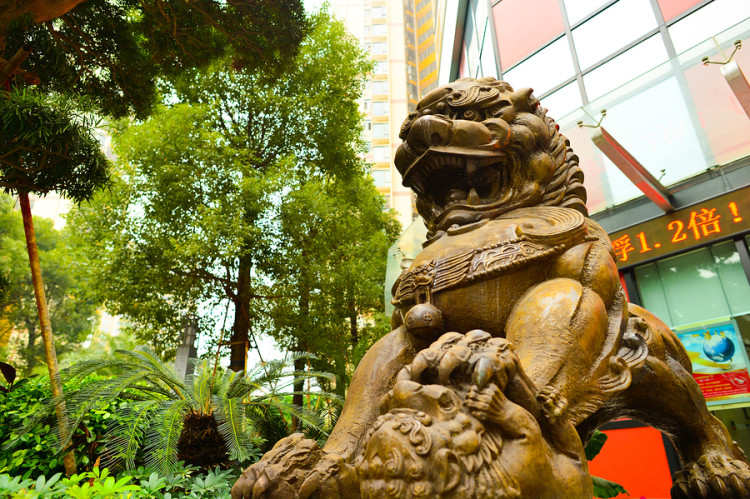China Seeks to Establish Its Own Brands – With Foreign Designers

(Bloomberg) —When evaporating profit margins prompted China’s Zhejiang Willing Foreign Trading Co. to launch its own brand for yoga wear last year, it spurned homegrown talent and turned to a French freelance designer.
“Chinese designers just don’t have good taste for foreign markets,” said Zhang Tao, assistant manager at the Hangzhou-based company. “Chinese businesses have been good at manufacturing but now we have to change our mindset. Brands are the future.”
After years of rising wages eroded its position as the world’s bargain manufacturer, China is striving to build its own brands and improve product quality and design. Those advances are crucial to maintaining the high growth needed to make the leap from middle- to high-income status — a jump only five economies have managed, including Taiwan, Hong Kong and Singapore, according to Nobel laureate Michael Spence.
“The expertise coming out of China’s university system is still mostly in engineering and the hard sciences,” said James Laurenceson, deputy director of the Australia-China Relations Institute at the University of Technology in Sydney. “This is well-suited to the technical challenge of upgrading Chinese industry, but not to the marketing challenge of selling it. Chinese production innovation married up with foreign marketing savvy is a natural fit.”
When Zhang unveiled Willing’s new YinGo yoga clothing brand at the Canton Fair this month, he was so busy on the first day he didn’t get to eat lunch. The company targets sales of $5 million to $10 million annually within two years, he said.
Zhang’s not alone in turning to overseas designers, a visit to the fair in Guangzhou showed. Dongguan Shijin Industrial Co. in the southern province of Guangdong has hired foreign designers to help build its Jordan & Judy homeware brand. Another is Shanghai-based Oriental Recreational Products Shanghai Ltd., which uses a team of overseas designers to shape its Aqua Marina and Silver Marine brands for paddle boards.
The Canton Fair claims to be the world’s largest trade gathering, bringing together more than 24,000 exporters and 196,000 buyers, mostly foreign. They ink deals in booths spanning exhibition space equivalent to 2,500 basketball courts. Turnover reached more than $30 billion during three sessions from mid-April to early May, according to its website.
With profits from manufacturing products for foreign brands squeezed by rising wage and materials costs, Dongguan Shijin’s branded products helped sales surge 50 percent last year to about 150 million yuan, driven by a contract to supply Japanese fashion retailer Miniso, according to salesman Frank Zhou.
It launched bags and luggage brand Pisidia in 2013, and home furnishings label Creadys last year. Zhou said the company targets sales of 400 million yuan this year and wants to become China’s version of Muji, the Japanese retailer famous for minimalist products.
“We probably won’t make much money at the beginning, but when we’ve established the brands we’re looking at a profit margin of 30 percent to 50 percent,” he said.
Shanghai-based Oriental Recreational Products was ahead of the curve, starting its brand building 12 years ago, says salesman Jason Jin. Sales are surging 30 percent annually for its paddle boards and MSpa inflatable hot tubs.
There may be a brighter future for home-grown designers though, says Jeffrey Towson, a professor of investment at Guanghua School of Management at Peking University. China has invested heavily in art and design schools and that’s bearing fruit with more than a million art and design students graduating every year since 2009, Towson said.
“They don’t have the experience yet, but they have the talent,” Towson said. “Fifteen years ago nobody hired Chinese engineers. Now every Fortune 500 company builds R&D centers in China. It’s going to be the same with designers.”



No Comment